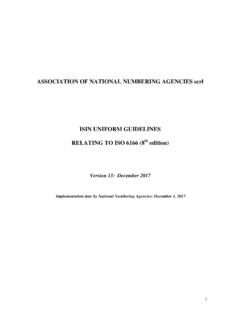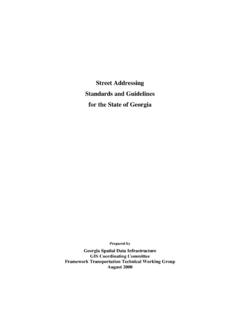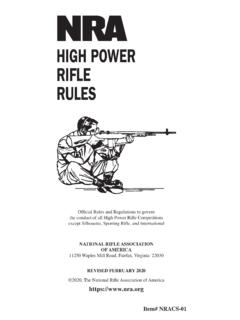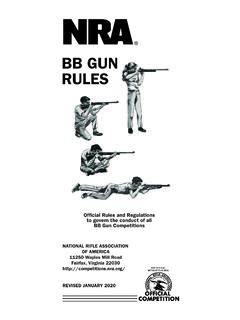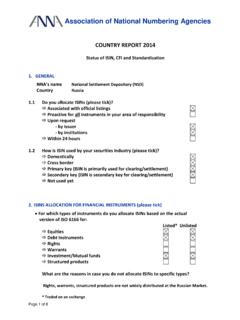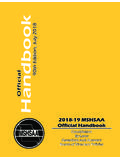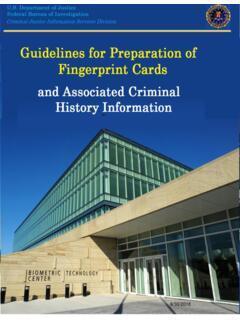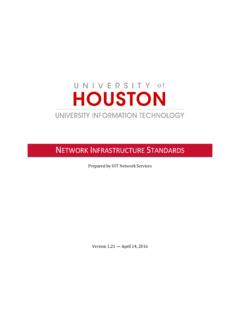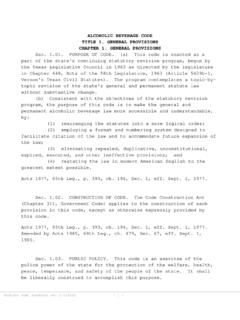Transcription of Advancing Education, Conservation and Outreach on Grazing ...
1 national Grazing Lands Coalition (NatGLC)2022 Grant Information and CriteriaProposal Deadline: February 7th, 2022 Advancing Education, Conservation and Outreach on Grazing LandsPurpose: The national Grazing Lands Coalition s mission is to promote ecologically and economically sound management of all private Grazing lands for all their adapted uses and multiple benefits to society. The NatGLC recognizes Grazing lands as a major source of watershed filtration, ground water recharge, and carbon sequestration, providing improved soil, water, and air quality. The purpose of these grants is to facilitate the following: (1) establishment of Conservation partnerships, leadership, and Outreach , (2) education of Grazing land managers, professionals, youth and the public, through Grazing conferences (3) improvement in the understanding of the values and multiple services that Grazing lands provide small acreage operations and tribal operations.
2 Projects must relate to Grazing lands sustainability or climate Smart Agriculture and include at least one of the following components: Conservation planning, workshops, or conferences. Eligible Applicants:Any State, Tribal, public, or private entity, association , group, or individual is eligible to apply. Federal agencies are not eligible. All primary individuals associated with the application must be listed. If the applicant is an entity, a DUNS number is required and must be submitted with the application. A Dun and Bradstreet (D&B) Data Universal numbering System (DUNS) number is a unique nine-digit sequence recognized as the universal standard for identifying and keeping track of over 70 million businesses worldwide. Applicants must obtain a DUNS Number. Information on how to obtain a DUNS number can be found at: or by calling 1-866-705-5711. Please note that the registration may take up to 14 business days to complete.
3 Applicants must provide their tax ID of Funds:The national Grazing Lands Coalition helps direct funding from the USDA Natural Resources Conservation Service (NRCS) to enable national /State/Local action grants. The NatGLC Committee is releasing this Request for Proposals (RFP) to solicit applications, award funds, and administer grants for the purpose of Grazing land research and analysis, education, innovative technology, demonstration projects and publication/media development. The NatGLC anticipates that approximately $60,000 will be available to be awarded. While there is no minimum or maximum awarded amount, to stretch funds we anticipate projects within the $5,000 to $10,000 range. Funds are available on a nationwide scope and must demonstrate Grazing lands planning, innovative technology, economic and environmental sustainability. Funds will be used to reimburse actual costs. 1 Partial reimbursements during the project are allowed up to 50% of the total funds requested.
4 The final 50% can be requested once the project is finalized and the final report is submitted. Project coordinators must cover project costs until each reimbursement. Final reports must be submitted before final reimbursement is paid. Matching funds (in-kind or cash) must be submitted when requesting reimbursements during the project and at the final reimbursement. Matching Funds Requirements:Selected applicants may receive grants of up to 50% of their total project cost. Recipients must match the NatGLC funds awarded on a dollar-for-dollar basis from non-Federal sources with cash and in-kind contributions. See Awarded Fund and Match Requirements for further information. Primary Uses of Funding:Projects granted will include at least one of the following components: Grazing Conferences Innovative technologies for Grazing lands Training benefiting producers and federal agencies WorkshopsProhibited Uses of Funds: Food (meals) SalariesRequest for Proposal Grant Process:Applicants will compete for available grant funds on the merits of their proposal and the NatGLC priorities (see Proposal Ranking Criteria below).
5 The grant funding is dependent upon available federal grant dollars, and the amount granted for each proposal will vary according to overall fund availability. All funds will be transferred as reimbursements upon submission of receipts and final reports. Report forms will be provided to awardees after awards are announced. Submission Process:All proposals must utilize the attached NatGLC Grant Application form and be submitted via webform at by 5:00 pm CST on February 7th, 2022. Additional relevant information should be submitted with the application. The webform can accept multiple files for this purpose. Acceptable file formats include Adobe pdf, MS Word, MS Excel, Apple Pages, and or Apple will be reviewed and announced the week of February 28th, 2022. Projects must be completed, and final reports received by November 3rd, Ranking Criteria:The NatGLC Committee will use the following criteria to evaluate submitted proposals: Will the project support education on pastureland, rangeland or silvopasture resources?
6 10% Will the project involve Conservation partnerships, leadership, and Outreach ? 20% Does the project have durability for future educational value? - 10% Is the applicant offering more than 50% match to the total project costs? 10% Does the project have climate smart agriculture? 10% Does the project educate Grazing land users on proper sustainable Grazing management techniques? 10%2 Does the project improve the understanding of the values and multiple services that Grazing lands provide? - 10% Are budget items reasonable for the request? All applications with indirect costs will be reviewed within these criteria. - 10% Does the project involve limited resource producers, tribal, new graziers and small acreage producers? 10% national Grazing Lands Coalition Support Recognition:All Outreach , publications, presentations, etc. will have the NatGLC logo attached as well as wording that recognizes the NatGLC s funding support.
7 Failure to do so may result in deduction of allocated funds. Awarded Funds and Match Requirements: All projects require a documented minimum 50% match of actual project costs. Match may be cash or in kind contributions. Projects that leverage funds and exceed a 50% match will be ranked higher. Matched funds must list sources and amounts. Matching funds must be secured at time of funding. Applications should include written verification of commitments of matching support (including both cash and in-kind contributions) from third parties. For any third party cash contributions, a separate pledge agreement is required for each donation, signed by the authorized organizational representative of the donor organization and the applicant organization, which must include: (1) the name, address, and telephone number of the donor, (2) the name of the applicant organization, (3) the title of the project for which the donation is made, (4) the dollar amount of the cash donation, and (5) a statement that the donor will pay the cash contribution during the grant period.
8 "In-kind" refers to non-cash contributions of goods or services made by third party individuals or organizations to support projects. Examples of in-kind include work done by unpaid volunteers and donations of supplies, facilities, or equipment. In-kind contributions must be necessary to accomplish program activities and are verifiable. For any third party in-kind contributions, a separate pledge agreement is required for each contribution, signed by the authorized organizational representatives of the donor organization and the applicant organization, which must include: (1) the name, address, and telephone number of the donor, (2) the name of the applicant s organization, (3) the title of the project for which the donation is made, (4) a good faith estimate of the current fair market value of the third party in-kind contribution, and (5) a statement that the donor will make the contribution during the grant period.
9 The sources and amounts of all matching support from outside the applicant institution must be summarized on a separate page and placed in the application immediately following the summary of matching support. No match may be from a federal source, cash or one-page narrative describing the budget needs and justifying why the budget is appropriate should also be included. This is limited to a one page maximum. Awarded funds will only be for actual costs incurred that have receipts/invoices as documentation. Salaries will not be considered an awarded funds item. Salaries may be counted as match funds. Salaries supported with federal funds ( , federal employees or federally sponsored positions) may not be designated as match funds. The intent of the NatGLC funds is to provide educational projects that do not require fees. If a fee will be charged to the participants, then that fee must be declared and a detailed explanation of purpose/use of the fee must be included in the RFP.
10 A detailed accounting of the fee must also be included in the reimbursement documentation. 3 Required Action for Final Reimbursement:Final payment reimbursement and the final report must be submitted to the NatGLC by November 3rd, 2022. Guidelines for a final report will be sent with award notification. Please note that unless other arrangements have been made, failure to submit a final report, in-kinds, and request for payment by November 3rd, 2022, may result in a forfeiture of grant required items, if applicable to the project: List of final participants, or proof of targeted audience distribution. Participant evaluations - NatGLC will provide participation evaluation forms after awards are granted. Follow-up with participants that includes attendance appreciation ( thank you notecards) and where additional information/contacts can be found. Final Agenda if project is a workshop Copy of publication/media produced Copies of promotional material Digital photos of the event in a print ready format (large file size)Equipment: Funds are intended primarily for Conservation planning, educational workshops, or conferences, not equipment.
